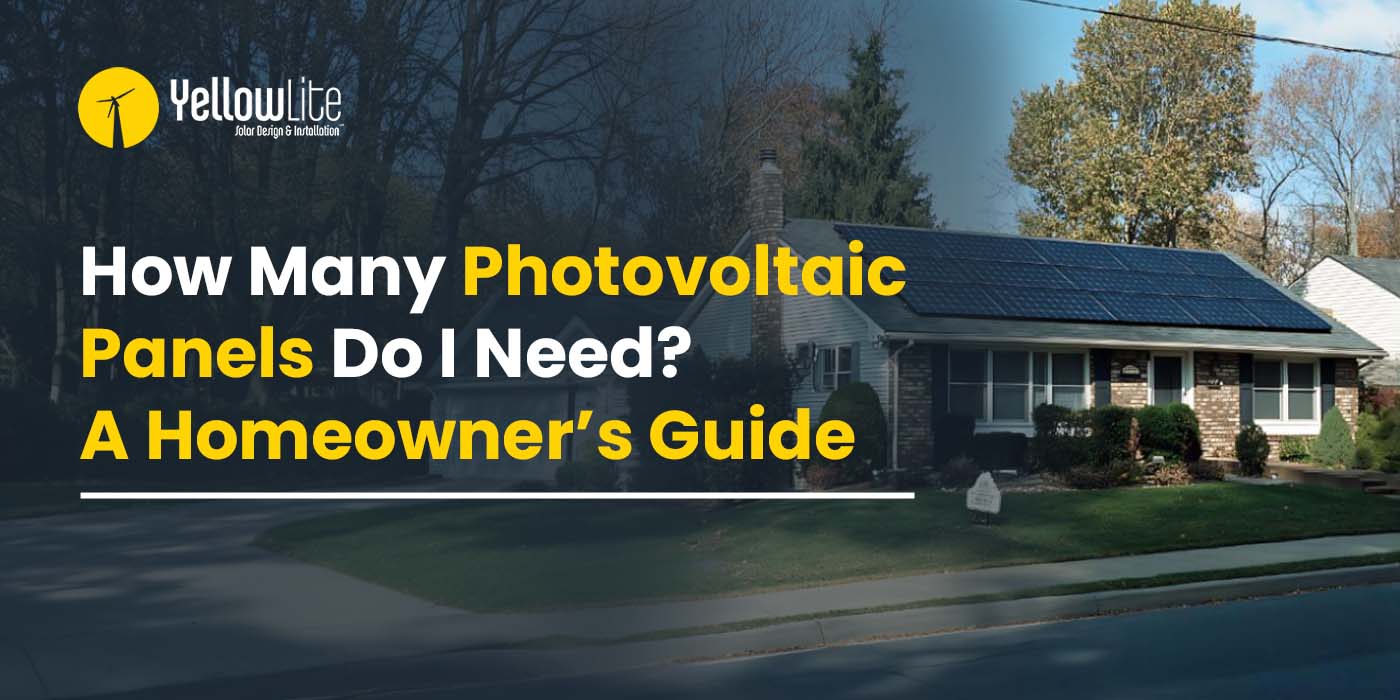Switching to solar is one of the smartest moves a homeowner can make — both for the planet and your pocket. But before you can start reaping the rewards of clean energy, there’s one big question on your mind: How many solar panels do you need to power your home?
In this guide, we’ll break down the key factors that determine system size, from your monthly energy usage to your roof space and panel efficiency. Whether you’re planning for a small suburban home or a larger setup with electric vehicles and air conditioning, this article will help you estimate the right number of solar panels to power your home confidently.
Can You Use Solar Panels to Power Home?
Absolutely! Solar panels are designed to generate electricity for your home by converting sunlight into usable power. Depending on your setup and goals, you can either offset part of your energy bill or go completely off-grid.
For most homeowners, a properly sized solar panel system will cover 80% to 100% of your annual electricity needs. Factors like your geographic location, roof orientation, and local climate will influence exactly how much energy your system can generate.
Working with an experienced solar partner like YellowLite ensures your system is sized and installed for maximum efficiency, so you can make the most of solar panels to power home.
How Many Solar Panels to Power Home?
The average American home typically requires 15 to 25 solar panels to fully offset its electricity usage. But this number isn’t one-size-fits-all. It depends on four key factors:
- Your Home’s Energy Usage
Most U.S. homes use about 10,500 kWh of electricity annually, or around 875 kWh per month. If you want to offset 100% of your electric bill, your system will need to generate that much power. - Solar Panel Wattage
Most modern residential panels range from 350 to 450 watts. For example, if you choose a 400-watt panel:
Annual Solar Energy Output = Number of Panels x Panel Wattage x Average Sunlight Hours
- Average Sunlight in Your Area
A house in Ohio will produce less power per panel compared to one in Arizona because of varying sunlight exposure. On average, most U.S. locations get about 4 to 5 peak sun hours per day. - Roof Space And Orientation
Your roof’s size, angle, and shading play a big role in how many panels you can install. A larger, unshaded roof with good south-facing exposure allows for more efficient energy capture and fewer panels to meet your needs.
If you're considering solar plus storage for even greater energy independence, explore YellowLite's Energy Storage Calculator to see how battery backup can fit into your plan.

Other Factors That Affect System Size
- Shading: Trees or neighboring buildings can reduce output.
- Future Usage: Planning for an EV or electric heat pump? Upsize your system accordingly.
Looking to learn more about how panel size and dimensions affect your system planning? Check out our Solar Panels Dimensions Guide to Choosing the Perfect Fit.
A 4-Step Formula to Estimate Your Solar Needs
Here’s a simplified 4-step method recommended by SolarReviews :
- Find your monthly electricity usage
- Look at your utility bill to see your average usage in kilowatt-hours (kWh).
- Convert that to yearly usage
- For example, 900 kWh/month × 12 = 10,800 kWh/year
- Divide by your area’s solar production ratio
- A production ratio accounts for weather, location, and panel angle.
- For Ohio or Midwest areas, this is typically 1.2–1.5.
- Divide by your panel wattage
- Let’s say you’re using 400-watt panels: (10,800 ÷ 1.3) ÷ 400 = 21 panels
Want to know how many solar panels do I need for my house? Use the YellowLite's Solar Panel System Size Calculator to get a custom estimate based on your zip code.
Can Solar Panels Really Power a Whole House?
They sure can! And, thousands of homeowners are already doing it. With a grid-tied solar system, your panels generate electricity during the day, and any extra power flows back to the grid. Thanks to net metering, you get credits for that extra energy, which you can use later, like at night or on cloudy days. That’s how many people bring their bills down to almost zero by using solar panels to power home.
Want true energy freedom? That’s where battery storage comes in. It lets you store the solar power you generate and use it even if the grid goes down. No more outages. No more surprises.
And the best part? With YellowLite’s $0-down financing, going solar doesn’t have to be a big financial leap.
Why Work with YellowLite?
Choosing the right solar panels to power home isn’t a one-size-fits-all process. At YellowLite, our team will help you assess your energy usage, roof size, and local sun exposure to design a system that maximizes your savings and energy independence.
Ready to explore your solar potential? Schedule a Free Consultation and we’ll help you size the perfect system.
Frequently Asked Questions
Q1: Can you really use solar panels to power your home entirely?
Yes, you can use solar panels to power your home fully, depending on your system size and energy usage. A properly sized solar panel system can offset 100% of your electric bill!
Q2: How many solar panels do I need for my house?
The number of solar panels you need for your house depends on your monthly electricity usage, roof space, and panel wattage. On average, a typical home needs 15-25 solar panels to power home energy needs.
Q3: What factors affect how many solar panels I need for my house?
Several factors affect how many solar panels you need for your house: your household’s energy consumption, your roof size, geographic location, and the efficiency of the solar panels to power home systems.
Q4: How do I calculate how many solar panels I need for my house?
To calculate how many solar panels you need for your house, divide your average monthly energy usage by the expected monthly output of one panel based on your location. Or use YellowLite’s Solar Panel System Size Calculator for accurate estimates.
Q5: Is it possible to add more solar panels to power home needs later?
Yes! If your energy usage grows, you can expand your system by adding more solar panels to power your home, provided your inverter and roof space allow for it.




